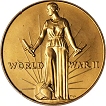Radiotelegram sent from The Fuehrerbunker at 15:15 on 1 May, 1945:
GRAND ADMIRAL DOENITZ --
Most secret -- urgent -- officer only
The Fuehrer died yesterday at 15:30 hours. Testament of April 29th appoints you as Reich President, Reich Minister Dr. Goebbels as Reich Chancellor, Reichsleiter Bormann as Party Minister, Reich Minister Seyss-Inquart as Foreign Minister. By order of the Fuehrer, the Testament has been sent out of Berlin to you, to Field-Marshal Schoerner, and for preservation and publication. Reichsleiter Bormann intends to go to you today and to inform you of the situation. Time and form of announcement to the Press and to the troops is left to you. Confirm receipt.
-- GOEBBELS.
Most secret -- urgent -- officer only
The Fuehrer died yesterday at 15:30 hours. Testament of April 29th appoints you as Reich President, Reich Minister Dr. Goebbels as Reich Chancellor, Reichsleiter Bormann as Party Minister, Reich Minister Seyss-Inquart as Foreign Minister. By order of the Fuehrer, the Testament has been sent out of Berlin to you, to Field-Marshal Schoerner, and for preservation and publication. Reichsleiter Bormann intends to go to you today and to inform you of the situation. Time and form of announcement to the Press and to the troops is left to you. Confirm receipt.
-- GOEBBELS.
Animated map of The Escape Route of Martin Bormann (Note, this was done in 1995 so looks crappy by modern standards, but I'm not going to re-do it.)
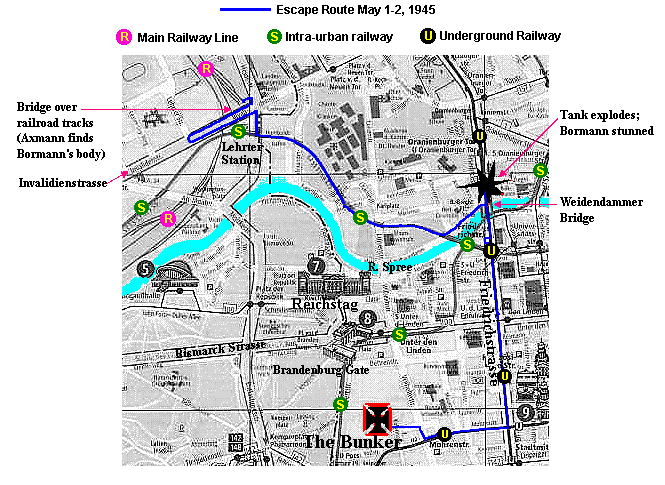
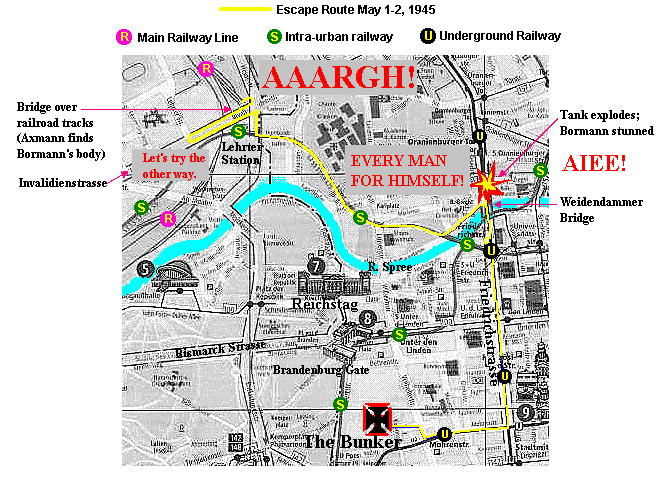
Goebbels' tenure as Reich Chancellor was brief. A few hours after sending this telegram, he poisoned his six children with cyanide capsules. At 20:30 he and his wife emerged from the Fuehrerbunker into the chancellery garden where they were shot, at their own request, by an SS orderly.
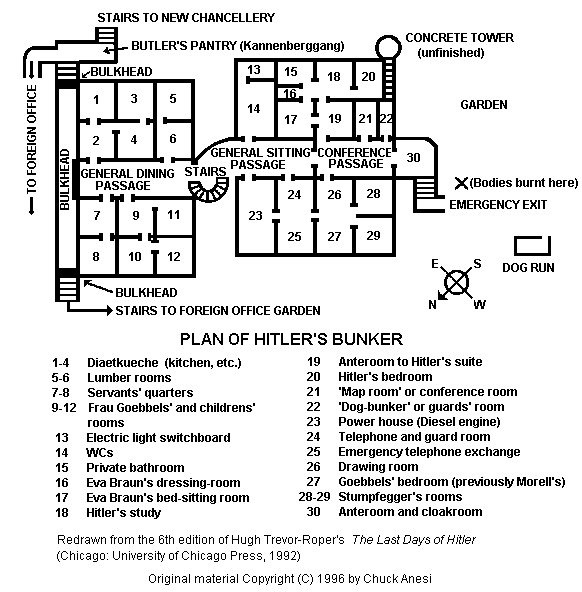
The bunker in 1995

In the summer of 1946, the Russians leveled the chancellery and blew up the external structures of the bunker with high expolosives. The underground remains of the bunker lie under the weed-grown mound shown in this photograph. For current information see Oscar C.R. den Uijl's Bunker Page
At the same time, in the bunker of the New Chancellery, a miscellaneous group of women, soldiers, party officials, and hangers-on gathered in preparation for a mass escape. Nominally under the command of Martin Bormann, they planned to follow tunnels from the chancellery to the subway line, and then follow the subway line north, under the Friedrichstrasse, to the Friedrichstrasse station a few hundred yards south of the river Spree. At that point they would surface, link up with what was left of Brigadefuehrer Mohnke's battle group, and attempt to force their way across the Weidendammer Bridge. Then they would proceed north-west, through the Russian lines, and save themselves as best they could.
The Friedrichstrasse in 1995, looking north toward the Weidendammer Bridge. In October, 1995 all of what was formerly East Germany was under construction. Bormann followed the subway tunnel that runs under
this street north to the Friedrichstrasse station, a few hundred yards south of the Weidendammer Bridge.
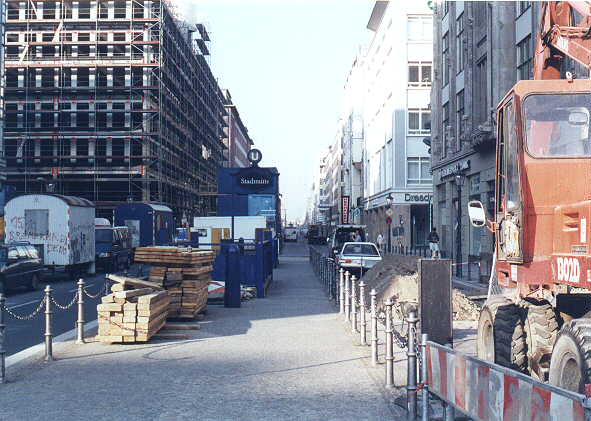
The Weidendammer Bridge, where the Friedrichstrasse crosses the river Spree, 1995
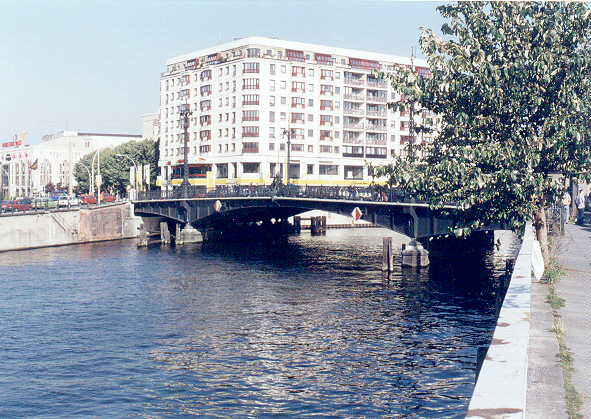

The Weidendammer Bridge, where the Friedrichstrasse crosses the river Spree, 1995

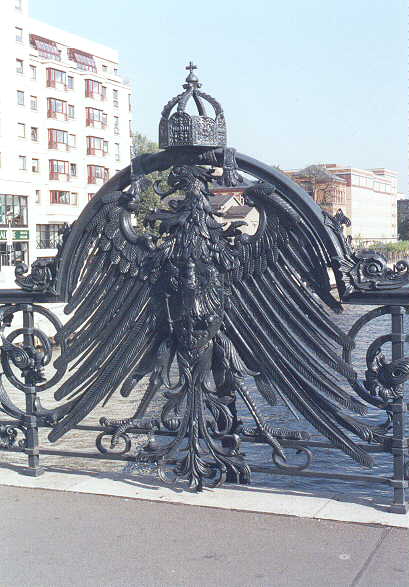
At 23:00 hours the mass escape began. Moving in small groups, they proceeded underground, as planned, to the Friedrichstrasse station. Here they emerged to find the ruins of Berlin in flames, and Russian shells bursting everywhere around them. The first group managed to cross the river Spree by an iron footbridge that ran parallel to the Weidendammer Bridge. The remaining groups likewise emerged at the Friedrichstrasse Station, but there became confused and disoriented. They made their way north along the Friedrichstrasse to the Weidendammer Bridge, where they found their way blocked, at the bridge's north end, by an anti-tank barrier and heavy Russian fire.
They next withdrew to the south end of the bridge, where they were soon joined by a few German tanks. Gathering about the tanks, they again pressed forward. Bormann, Artur Axmann (head of the Hitler Youth), Ludwig Stumpfegger (Hitler's surgeon), and others followed the lead tanks as far as the Ziegelstrasse. There a panzerfaust struck the lead tank. The violent explosion stunned Bormann and Stumpfegger, and wounded Axmann. All retreated to the Weidendammer Bridge.
The Friedrichstrasse, looking north from the Weidendammer Bridge toward the Ziegelstrasse, 1995
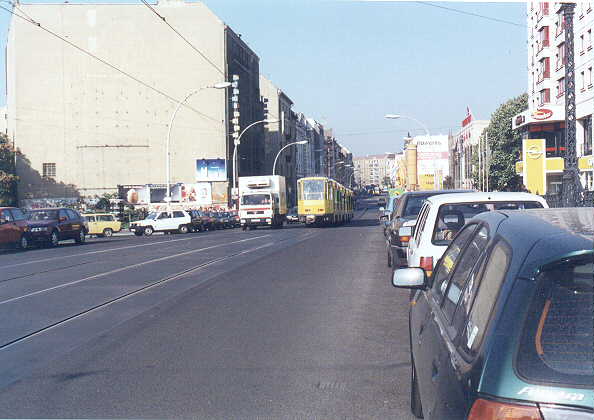
The tank explosion occurred about a hundred yards beyond the yellow streetcar (center of photo).
Now it was every man for himself. Bormann, Stumpfegger, Axmann, and others followed the tracks of the surface railway to the Lehrter station.
Tracks leading to the Lehrter Station, 1995
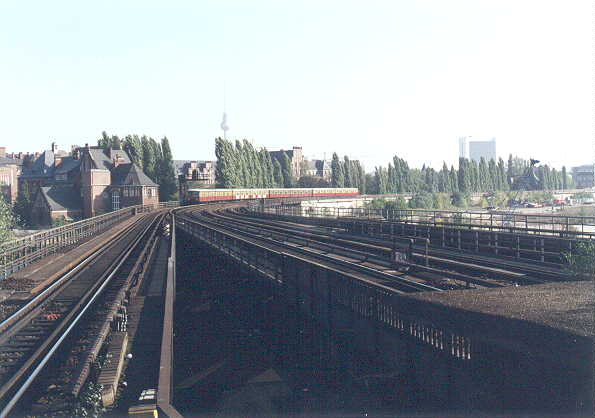
The railroad tracks that Martin Bormann followed in his flight from the Weidendammer Bridge to the Lehrter Station. This photograph was taken from the Lehrter Station, looking southeast.
The Lehrter Station, 1995
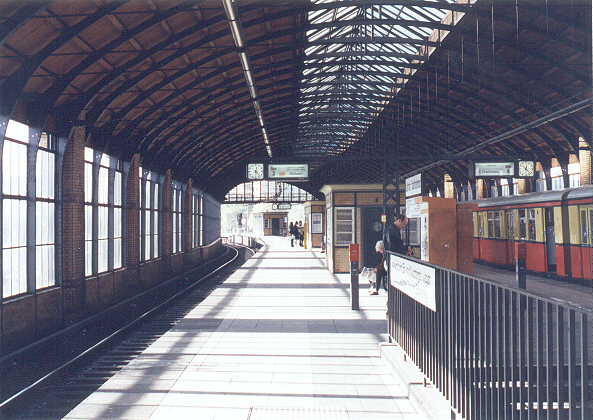
The Lehrter Station in 1995. View looking west.
Arriving at the Lehrter Station, Bormann and Stumpfegger decided to follow the Invalidienstrasse east. Axmann elected to go west, but encountered a Russian patrol and returned on the path Bormann and Stumpfegger had taken. He soon found them. Behind the bridge, where the Invalidienstrasse crosses the railroad tracks, they lay on their backs, the moonlight on their faces (the moon was waning, but more than half-full). Both were dead. Axmann could see no signs of an explosion, and assumed that they had been shot in the back. He continued on his way, escaping from Berlin and spending the next six months hiding out with the Hitler Youth in the Bavarian Alps, where he was eventually captured.

The Invalidienstrasse Bridge, 1995

The Doomsite of Martin Bormann, 1995
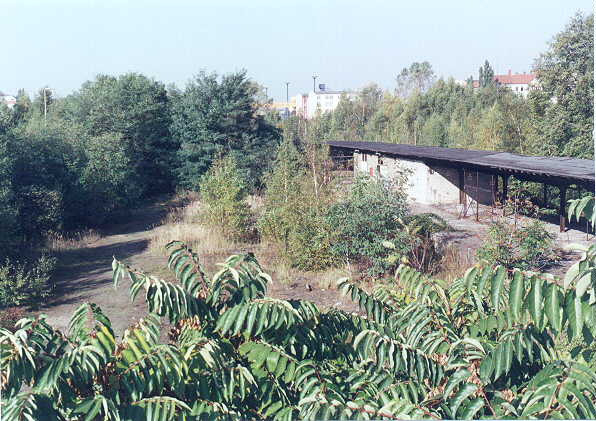
For a full, fascinating, lucid, and authoritative account of the fate of Messrs. Bormann, Goebbels, Hitler, and other denizens of The Bunker, consult The Last Days of Hitler by Hugh Trevor-Roper. Late in 1945, British Intelligence appointed Mr. Roper to investigate the evidence surrounding the death of Hitler. His book followed in 1946 as a result of this investigation, and was updated by him over the years as new evidence emerged.
Roper left the issue of Bormann's death open in early editions of the work, because evidence of Bormann's death rested solely on the testimony of Artur Axmann. Although Axmann's testimony regarding other events was truthful so far as it could be independently verified, Roper realized that Axmann might be giving false evidence to protect Bormann from further search.
In December, 1972, during construction near the Lehrter Station (near to where Bormann's diary had been found in a discarded leather jacket in 1945, and close to the spot where Axmann said he had seen Bormann's body in the moonlight of that fatal night) two skeletons were unearthed. After extensive forensic examination, using the dental records of Bormann's dentist (Prof. Hugo Blaschke, who was also Hitler's dentist) the shorter of the two skeletons was identified as that of Martin Bormann, and West German authorities officially declared him dead. The forensic identification was validated by Dr. Reidar F. Sognnaes, a celebrated U.S. expert in such matters. (Reidar F. Sognnaes, "Dental Evidence in the Postmortem Identification of Adolf Hitler, Eva Braun and Martin Bormann", in Legal Medicine Annual, 1976.) This new evidence caused Roper to write in the 1978 edition of The Last Days of Hitler that "...in view of new evidence which has recently been found, I believe that it [the question of Bormann's death] can now be closed." Additional evidence came in 1998 from DNA testing of the skeleton.
As stated in the Final Report of the Frankfurt State Prosecution office under File Index No. Js 11/61 (GStA Ffm.) in "Criminal Action against Martin Bormann on Charge of Murder", dated April 4, 1973:
XI. Result
XII. Further Measures
XI. Result
Although nature has placed limits on human powers of recognition (BGHZ Vol. 36, pp. 379-393-NJW 1962, 1505), it is proved with certainty that the two skeletons found on the Ulap fairgrounds in Berlin on December 7 and 8, 1972, are identical with the accused Martin Bormann and Dr. Ludwig Stumpfegger.
The accused and Dr. Ludwig Stumpfegger died in Berlin in the early hours of the morning of May 2, 1945 -- sometime between 1:30 and 2:30 A.M.
XII. Further Measures
1. The search for Martin Bormann is officially terminated....
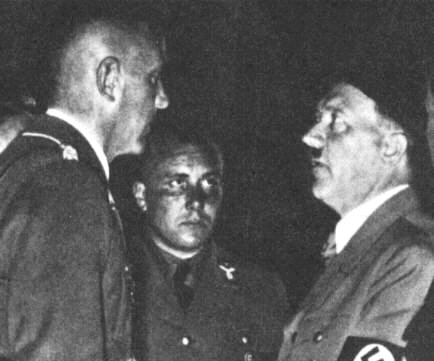
Martin Bormann • June 17, 1900 • May 2, 1945
( Of course, die-hard conspiracy bugs would no doubt argue that Bormann died in Paraguay, Chile, Ecuador, Florida, or elsewhere and had his remains re-interred, surreptitiously, at the Ulap fairgrounds in Berlin, where they could later be "discovered". We doubt it, but if anyone would care to provide a succinct argument in favor of Bormann's survival past May 2, 1945, we will include it as an addition to this site. But an argument based merely on reports that Bormann was SEEN will not qualify.
Related Stuff:
-
Words and music for the Horst Wessel Song
- The F Scale. Sixty-eight years ago, the Authoritarian Personality studies attempted to "construct an instrument that would yield an estimate of fascist receptivity at the personality level." This online, interactive F Scale presents that instrument in its final form.
